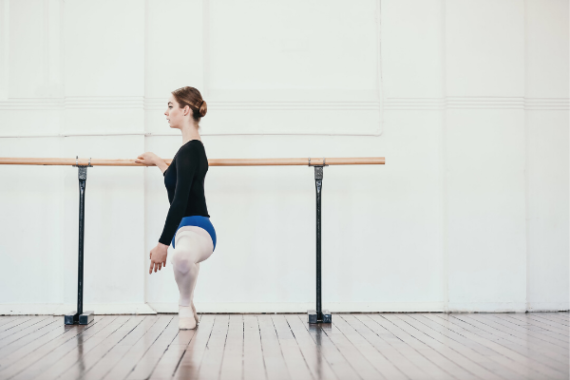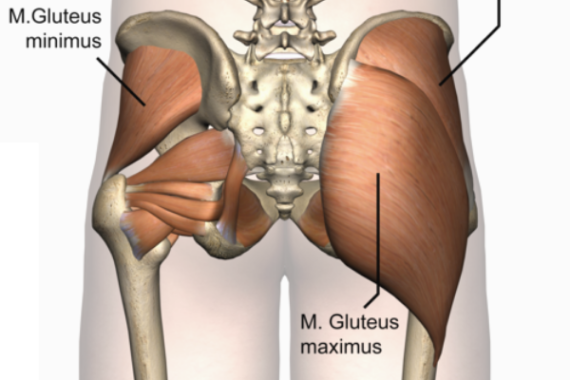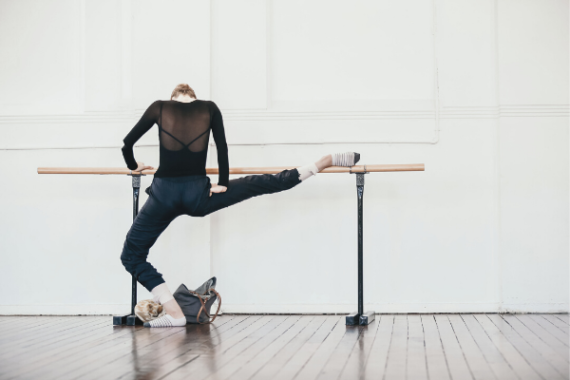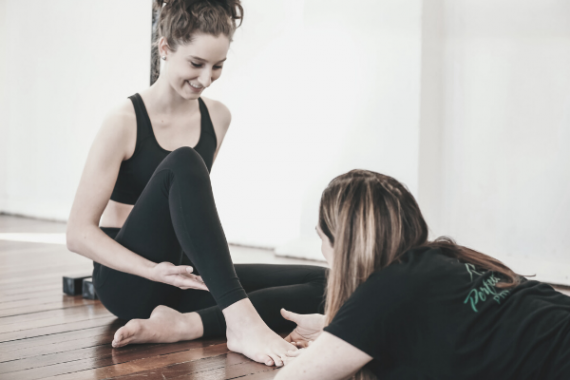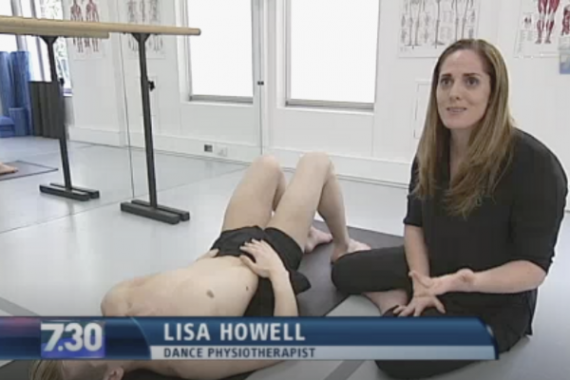Can Swimming make your Hip Flexors Tight?
Over the years I have received lots of emails from people noticing all kinds of things that can contribute to decreased flexibility...
Here is one I received from a Mother (and dance teacher) with a few questions about tension in the hip flexors. This is related to some things that we discuss in the Front Splits Fast program so I thought that you would appreciate the answers I gave her.
"Hi Lisa!
I am really excited to start working with your program both with my own kids (golf, soccer, hapkido, track) and with all of the ballet students that I teach.
I feel that any question I ask right now might be premature since I have not yet started the program, but I will go ahead and shoot them off because this is an area I have been studying and researching for years. The little girl who is playing Clara in my Nutcracker this year is a very strong, dedicated dancer. Her main holdback has been her turn-out. She seems to have extremely tight (sometimes painful) hip flexors which make turning out very limited. She is also quite involved in swimming. I have noticed with other dancers who swim that they also have tight hips. One student who did not have any tightness started swimming for PE in high school, and also immediately started complaining of sore hips. Is there any relation? Can the hip flexors be a big problem both in flexibility and turnout range? Can there be improvement with proper care and knowledge as in your program?
Also, my son is involved in Hapkido. He is very aware of good stretching and seems to be quite flexible. However, he seems to always also be tight in his hip flexors and seems to regularly pull his hamstring (way up high into his hip). Is it possible there is just a weakness here, or after being injured can't quite completely heal? He continues a cycle of going regularly to class, injuring himself, stopping because of the pain, waiting for it to feel better, and then continuing again.
I know how busy you are, so if you have any time to address my questions I will feel extremely honored. I have greatly enjoyed all of the information in the Perfect Pointe System and thank you for your dedication and wisdom.
Sincerely,
Kelly M (Tustin, California)"
Hi Kelly, and thanks so much for your question! Yes, there is definitely a relationship with tension in the hips flexors and reduced turnout and flexibility, and also between reduced turnout and flexibility and tension in the hips! It is one of those "which came first... the chicken or the egg?" scenarios!
If it is hard to turn the hip out fully, when we attempt to lift the leg into retiré (passé) a little muscle over the front/side of the hip called your TFL often works much harder than it is designed for. (You will learn more about this muscle in the program). Overuse can obviously cause pain and tension in the hips. Tension in this muscle will then block turnout, especially when in standing. So, therefore, if there is already less turnout range, and a student is repeatedly lifting their leg into retiré, then they will, unfortunately, tend to get tighter if their technique is not very good.
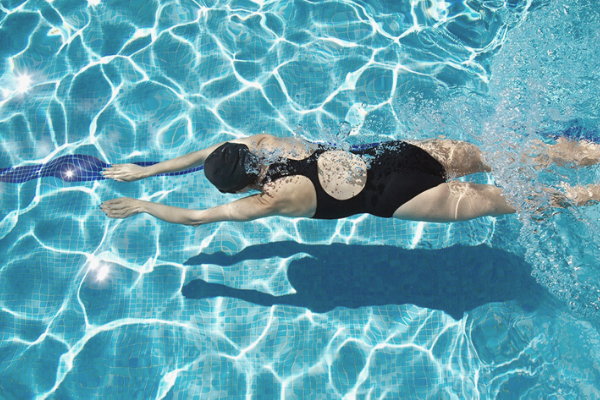
In relation to swimming, there are two possible reasons for the tension developing in the hips.
1) How much Breaststroke have each of the students been doing? While swimming freestyle can be great for releasing tension in the spine, depending on the technique of the swimmer (or lack thereof...) tension may build in the hips from repeated hip flexion during breaststroke. If the technique is sound, I do not see that this should be a problem, and I personally swam considerable distances at a competitive level when I was dancing with no detrimental effect!
2) The other thing that I would take a look at is the posture that both your son and your 'Clara' stand in outside of class. I have discovered that one of the biggest contributors to tight hips in students is their casual standing posture, as opposed to the posture that they hold in class. Especially note if they tend to tilt the pelvis forward (bottom out), or sit into one hip. Posture may also be affected if the student is getting cold after swimming and sits huddled with the hips flexed to keep warm (a very common position).
Swimming is a great adjunct to dancing as it can give a good form of cardiovascular exercise without any load on the feet or lower limbs. Perhaps just reduce the amount of breaststroke that they are both doing for a few weeks and see if this changes things.
With your son, often recurrent strains of the hamstring are due to underlying tension in the nerves (has he had a recent growth spurt?) or an imbalance in the strength of his hamstrings and gluteals (buttock muscles). We will be discussing the issue of neural tension in detail in the DVDs, so make sure that you follow all of the testings carefully and try the releases on him to see the difference. I am sure that he will notice a difference straight away!
This is a great reminder to us all that it is often what we do with our bodies outside of class that dictates how mobile it is in any given direction. Always be mindful of your posture and how this can affect your mobility.
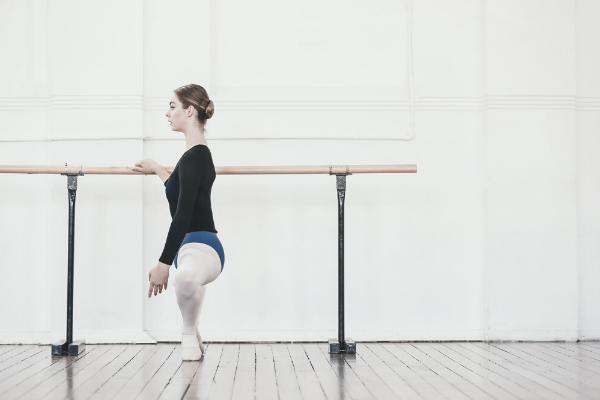
There are lots of gentle hip release techniques in the program, so once your DVDs arrive, work on that section to discover new ways of improving mobility in this area!
Let me know what you discover!
Kindest regards,
Lisa
Turnout Resources
If you are looking to delve deeper into this topic, check out the following programs:
- Tips for Turnout: This ‘Tips for Turnout Guide’ is a great starting point for anyone wanting to learn more about how to maximise turnout safely, and is the first resource in our Training Turnout Series. It gives you tips on improving your range, developing control of your standing leg and specific ways to increase the height of your développé devant.
- Training Turnout: Deepen your exploration of the anatomy of the dancers’ hip with this unique Training Turnout eBook. As the second resource in our Training Turnout series this program is a great follow on from our Tips for Turnout Program. Learn how to assess and understand the structure of your own hips, strengthen standing leg turnout and turnout en fondu as well as develop extraordinary control in your adage.
- Training Turnout in Tiny Dancers: If you are a dance teacher, this is the perfect continued education course for you. In this systematic and comprehensive approach to training turnout in tiny dancers, Lisa and Beverly provide dance teachers with direct techniques to use in class to safely develop optimal range and control of motion in all dance students. This program begins by establishing strength and control in parallel, before adding on the control of rotation, which is hugely important in the long term health of dancers’ hips. Using elements of fun and creative play to bring scientific and detailed training programs into dance schools is a unique and effective way to help thousands of young students worldwide.



